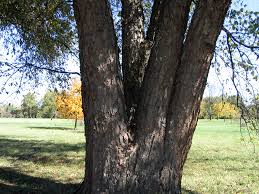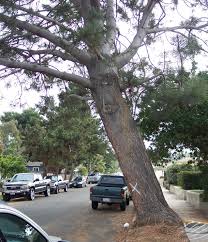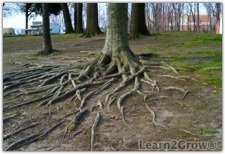Seven Tree Warning Signs You Should Know

Trees are your garden’s greatest asset. Whether evergreen or deciduous, they cool your home in summer and protect from harsh winds in winter. And they offer aesthetic appeal. Handsome trees raise property values.
So late autumn is an excellent time to take thirty minutes and do a tree inspection, says Bob Polomski, Ph.D. He’s an arborist and horticulturist who teaches at Clemson University in South Carolina. He spoke at this year’s Garden Writers Association Symposium. His talk was so practical and important that I’m passing along these seven warning signs. If you see one, Bob says, “Step up and make the phone call to a certified arborist.”
Yes, it may be expensive, compared to other gardening jobs, but you’re protecting your investment—not only in the tree itself, but in your home, greenhouse, and garden.
#1. Dead or broken hanging branches—Last year’s harsh winter left many trees with dieback. If the branches are larger than two inches in diameter, they can cause damage when they fall.

#2. A leaning tree—A little lean could be all right, although “exposed roots, or a mound of soil at the base,” Bob says, “may be an imminent hazard.” Don’t be in denial, just because you’ve lived with the tilted tree for many years. At the very least, canopy thinning may be called for.
#3. Multiple trunks—The point where the trunks meet is often a weak spot. Trunks should not have cracks or splits. That means they can separate during wind or ice storms.
#4. Weak branch unions—Branches larger than three inches in diameter should not have cracks or splits where they join the trunk. “It’s best to have the branch removed,” Bob notes, “rather than have a storm do it for you.”
#5. Trunk and branch cracks—Place a pencil in the crack. If the fissure extends deeper than the bark layer, it’s time to act.

#6. Decayed wood—Does your tree have cavities, cankers, mushrooms or conks growing on it? All may be fine but these are indications that your tree needs a risk assessment.
#7. Root problems— Bob says eighty percent of tree troubles start in the roots. Encircling or broken roots are a sign your tree could use an expert’s help. Also, note damage that may have occurred at the base of the trunk from string trimmers or rodents. Mulch should never cover the trunk’s natural outward flare as it meets the ground.
Another source for information on fungus on trees is from the University of California: http://www.ipm.ucdavis.edu/PMG/PESTNOTES/pn74109.html


